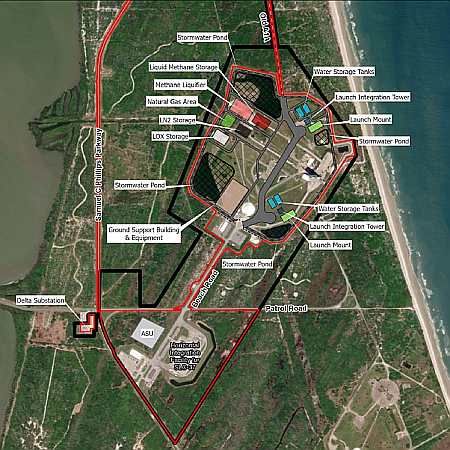Update on SpaceX’s plans to resume Starship/Superheavy flight testing
Link here. The article provides a detailed overview of the situation at Boca Chica following the static fire explosion of a Starship on June 18, 2025, which badly damaged the Masseys test stand used by Starship prior to launches.
The problem facing the company is that it wants to fly the last few version-two Starships (called Block 2) before it is ready to switch to the upgraded Block 3, and these two versions apparently require a different set up on the test stand. The article outlines three options, with the first two the simplest and most straightforward, but require the most delays.
Option three, which is the most SpaceX-like of them all, would involve the repair Masseys for Block 3 and, in parallel, attempt to come up with a plan to static fire Ships on Orbital Launch Pad 1 (A). This would allow SpaceX to continue testing and flying the remaining Block 2 Ships while preparing for Block 3 of Starship. This is what SpaceX is planning.
In other words, do Block 2 Starship prelaunch static fire tests on the launchpad itself while Masseys is being rebuilt for Block 3.
The article outlines in detail the technical difficulties this plan requires, because the launch mount is also used for prelaunch static fire tests of Superheavy. The two rockets require different mount clamping and fueling systems.
If this is the plan that SpaceX is following, it will likely mean that the next test flight, the tenth, will occur in about two months, maybe sooner. We will get a better idea of the company’s plans in the coming weeks.
Link here. The article provides a detailed overview of the situation at Boca Chica following the static fire explosion of a Starship on June 18, 2025, which badly damaged the Masseys test stand used by Starship prior to launches.
The problem facing the company is that it wants to fly the last few version-two Starships (called Block 2) before it is ready to switch to the upgraded Block 3, and these two versions apparently require a different set up on the test stand. The article outlines three options, with the first two the simplest and most straightforward, but require the most delays.
Option three, which is the most SpaceX-like of them all, would involve the repair Masseys for Block 3 and, in parallel, attempt to come up with a plan to static fire Ships on Orbital Launch Pad 1 (A). This would allow SpaceX to continue testing and flying the remaining Block 2 Ships while preparing for Block 3 of Starship. This is what SpaceX is planning.
In other words, do Block 2 Starship prelaunch static fire tests on the launchpad itself while Masseys is being rebuilt for Block 3.
The article outlines in detail the technical difficulties this plan requires, because the launch mount is also used for prelaunch static fire tests of Superheavy. The two rockets require different mount clamping and fueling systems.
If this is the plan that SpaceX is following, it will likely mean that the next test flight, the tenth, will occur in about two months, maybe sooner. We will get a better idea of the company’s plans in the coming weeks.

 <
<